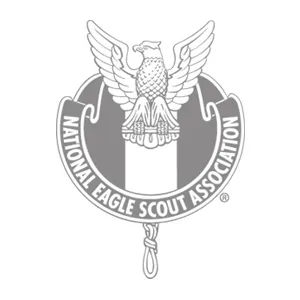Cubital Tunnel Syndrome can be very painful. The Loredo Hand Care Institute is here to provide you relief.
Our Dallas Cubital Tunnel Release Treatment can help relieve numbness, tingling, swelling, and more. Learn more bout Dr. Pedro Loredo and how a Dallas hand specialist can help you.
What is Cubital Tunnel Syndrome?
The cubital tunnel is a narrow channel in the elbow through which the ulnar nerve passes. This area is often referred to as the “funny bone”.
The ulnar nerve is surrounded by very little padding and can easily become compressed, inflamed or damaged from long periods of pressure or stretching at the elbow, resulting in Cubital Tunnel Syndrome (also referred to as Ulnar Nerve Impingement).
The ulnar nerve supplies muscle commands to the forearm and parts of the hand and therefore tingling, pain and/or numbness can be felt in these areas when the ulnar nerve is affected.
What Are the Symptoms of Cubital Tunnel Syndrome?
Symptoms of Cubital Tunnel Syndrome include the following:
- Numbness and/or tingling sensation in the fingers and hand
- Pain in the hand, wrist, forearm, shoulder and/or neck
- Muscle weakness of the fingers and hand
- Swelling of the fingers and hand
- Some patients may experience a “clawing” of the ring and little fingers

The Stratos Endoscopic Release System

Additional advantages of the minimally-invasive Stratos Endoscopic Release System include:
- A 98% surgery success rate
- Minimal scarring
- Same day use of the affected elbow/hand
- Better visualization of the elbow anatomy
- Peace of mind knowing you are benefitting from the safest and most advanced technology available
What Can I Expect After Cubital Tunnel Surgery?
Cubital tunnel release using the Stratos Endoscopic Release System is an outpatient procedure in which Dr. Loredo is able to access the cubital tunnel endoscopically through a tiny opening at the elbow.
This minimally-invasive approach provides instantaneous relief from your pain (for most patients) as well as much faster recovery time and return to daily activities. Post-surgery, patients will wear a splint for one week after which they will have full, unrestricted use of their arm/elbow.

Frequently Asked Questions
What causes Cubital Tunnel Syndrome?
The causes of Cubital Tunnel Syndrome are often difficult to pinpoint. Because there is very little soft tissue padding where the ulnar nerve travels through the cubital tunnel, the nerve is especially vulnerable in this area. Some potential causes of Cubital Tunnel Syndrome include:
- Prolonged or repetitive bending of the elbow
- Prolonged pressure on the elbow
- Fluid retention in the area causing compression of the nerve
- Trauma to the area resulting in irritation or inflammation of the nerve (e.g. hitting your “funny bone”)
How do I know if I have Cubital Tunnel Syndrome?
Only a doctor can definitively diagnose Cubital Tunnel Syndrome. We recommend seeking the opinion of a medical professional if you are experiencing any of the following symptoms:
- Numbness and/or a tingling sensation in the fingers and hand
- Pain in the hand, wrist, forearm, shoulder and/or neck
- Muscle weakness of the fingers and hand
- Swelling of the fingers and hand
- A “clawing” of the ring and little fingers
Is there anything I can do to prevent Cubital Tunnel Syndrome?
You can do the following to try and prevent or ease symptoms of Cubital Tunnel Syndrome:
- Avoid flexing or extending your elbows repeatedly
- Avoid bending your elbow for long periods of time or putting pressure on your elbow
- Sleep with your elbow straight (elbow braces can be used as an aid)
- When working at a desk, straighten out and rest your elbows frequently
Featured Story - Traci, Cubital Tunnel Patient

Contact the Loredo Hand Care Institute
If you are experiencing any of the symptoms associated with Cubital Tunnel Syndrome or would like to learn more about our practice in the Dallas area, please contact us today to schedule an appointment or get your free insurance check.
